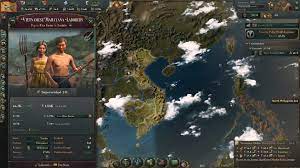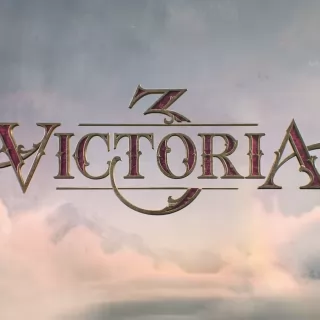Paradox Interactive returns to our screens with Victoria 3, a well-kept project that will not disappoint fans of the genre.
Judging Paradox titles is never easy, especially at launch. This for a number of reasons, mainly related to the basic complexity that distinguishes them, which translates into an incredible variety of situations that can only be analyzed after tens of hours of play. This is precisely the case of the Victoria series, whose second and last chapter dated 2010, has always remained at the top of the preferences of the players of grand strategy titles. After the surprise announcement only a year ago, and our test of Victoria 3, which left us very good impressions, will the third incarnation of the series live up to the ambitions of the development team? We are finally ready to answer this question.
Accessibility first of all
For anyone fasting grand strategy, Victoria 3 puts the player in command of any nation on the planet from the year 1836 to 1936, to guide every single economic, political and military aspect in a century of great revolutions. There is no real victory condition at the base of the gameplay, if not the one that the player himself imposes at the beginning of the game, as is the tradition at Paradox. However, it is at this juncture that Victoria 3 takes its first welcome turn.
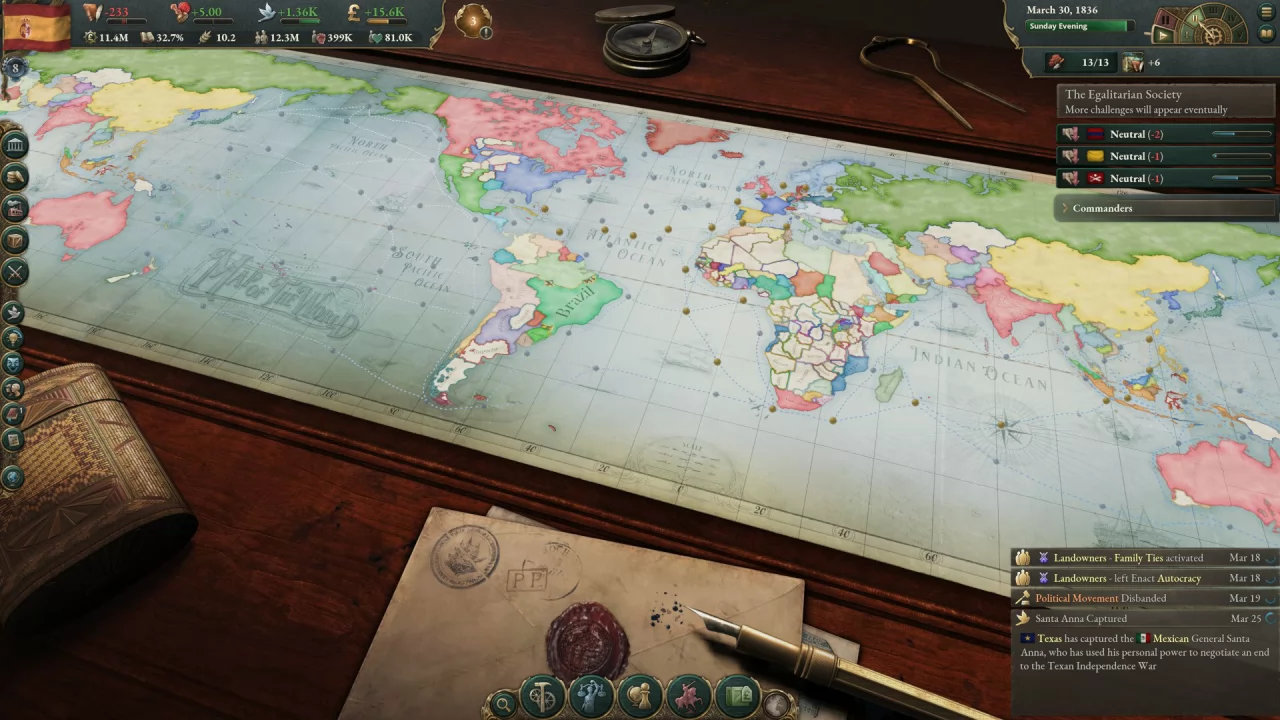
At the start of a new game we will be asked to choose whether to conquer economic hegemony, total military domination or aim for an egalitarian society. The free mode is still available, but choosing one of the pre-set ones will add to our game diary a series of optional objectives that will guide us towards our goal.
In the first few hours spent on this third installment, it was immensely gratifying to understand how and why achieving each one was critical to our plans. The “Tell me how” and “Tell me why” buttons have in fact given us a general picture of a context in which there is not much that can be changed without producing significant long-term effects. Complexity has not been sacrificed in any way in the name of accessibility, thanks to an intense work of UI design whose results could not be more positive than this.
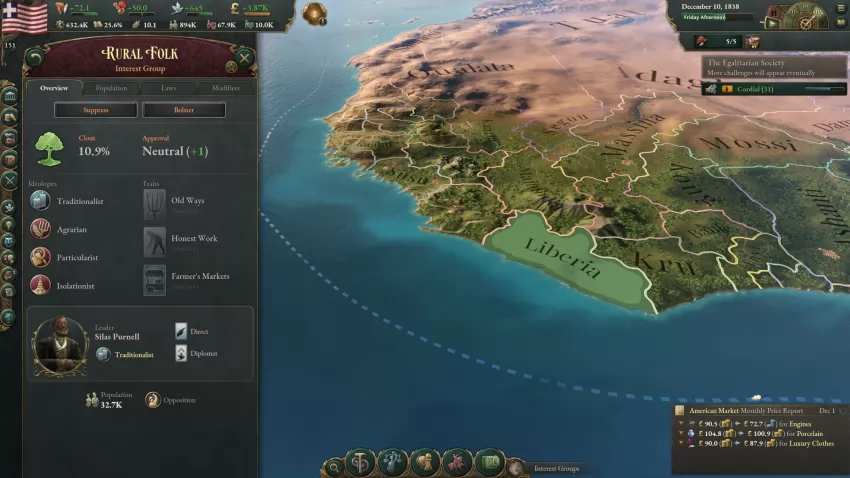
Every possible action is quickly accessible via the numerous game menus, in addition to a system of tooltips borrowed from Crusader Kings 3 (to learn more, here is the review of Crusader Kings 3), with which to obtain a detailed description of each concept, its meaning and how the related metrics are progressing. Our every decision will have ramified consequences in almost every aspect of the experience and having the tools to navigate this maze immediately gave us a sense of confidence and mastery of the internal mechanisms of the nation.
Power to the people and circular economy
Pops, an aggregate representation of every social group in our nation, will roughly decide what the player can do. More than in the previous chapter, the interests of those who work in factories, those who lead and make up political parties, or those who fight our wars, will be evident.
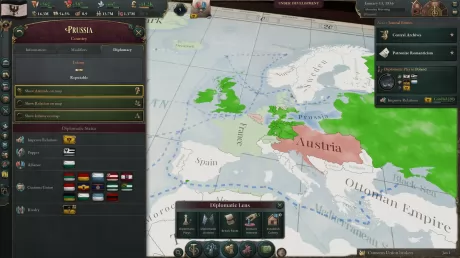
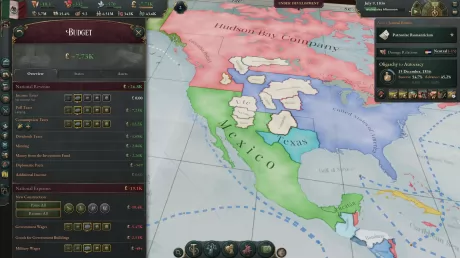
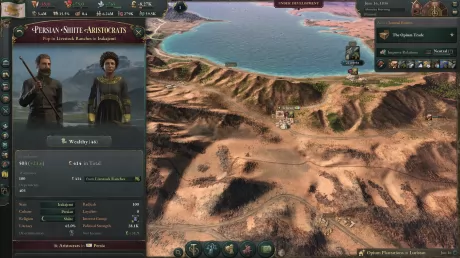
Every Pop expects a certain standard of living and that the laws discussed and promulgated serve its ideals. In Victoria 3 we felt really and constantly immersed in a sea of conflicting interests, in which only the skill of the player, in encouraging some or repressing others, determines the success of the strategy. Universal suffrage may not be welcomed by the aristocratic fringe of government, just as expanding colonial policy may displease landowners who see their interests threatened. I pop, in other words, they will be the main obstacle to our plans, but fortunately by moving in certain political directions, and making a few concessions, it will be possible to gradually exclude the least desired groups from political life. If global domination is to shift from a more lax slavery law, these are options the player can consider. The ambition of the Swedish developer was to create a great social simulator, and – we must say – it came very close. Inventions, political movements, protests and revolutions are part of the complex social system and will also occur independently of our control, but we will always know the reasons. Supporting or fighting these evolutions will be our choice, but there is no doubt: the engine that drives the simulation in Victoria 3 is admirable.
When we are not committed to promoting social or economic policies, we can devote ourselves to industrial production or the procurement of important raw materials. On the economic simulation front, Victoria 3 involves us firsthand in the circular definition of supply and demand in terms of materials and products, both within the domestic and international markets. Intuitively we will be able to see what caused a decline in productivity, with a rather diverse range of possibilities to remedy it.
Control over these processes is absolute: we will be able to create new trade routes to obtain materials from foreign markets at a lower price, expand industries or even change production methods with cheaper solutions.
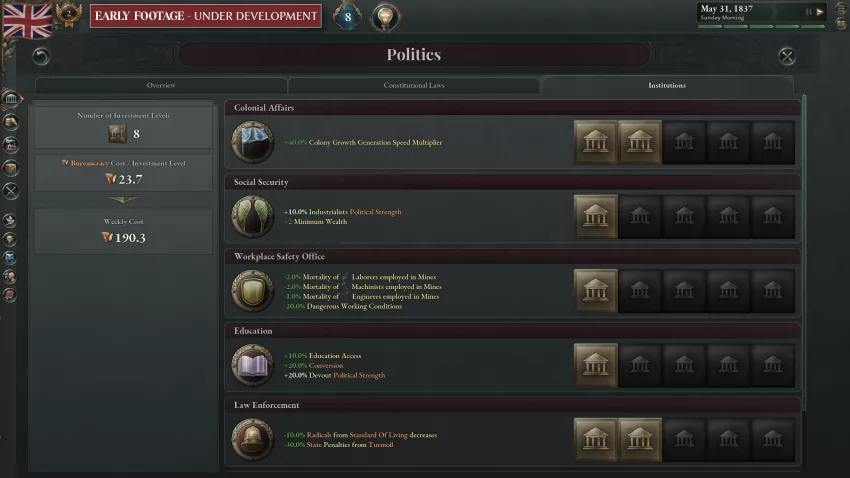
Over the course of the 50 hours we spent in the company of the game, the set of tooltips and numerous explanatory menus allowed us to broadly understand the functioning of the treasury, here referred to as the gold reserve, and how the GDP is link directly to the standard of living of our citizens, managing to lay the foundations for the growth of solid economies. Sometimes we have won long and tiring wars, precisely because over time the country faced has no longer been able to meet the costs of following up the conflict.
Revolutions, conquests and negotiations
Victoria 3 takes a different approach from its peers: the focus is not war. Before considering brute force, we will have to expect to spend large sums of money. Prolonging the conflict will in many cases amount to the collapse of the economy, unless the controlled country is self-sufficient, as happened to us playing with Prussia or the United States.
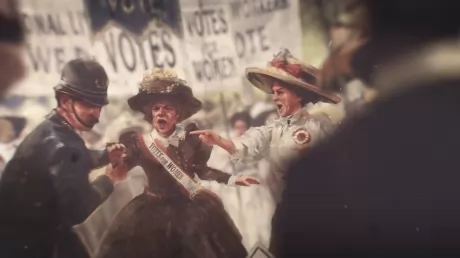
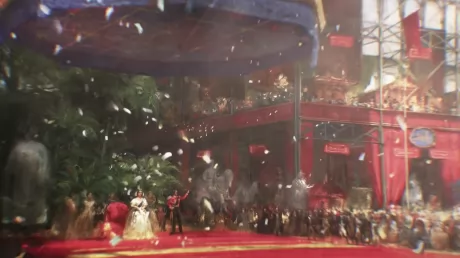
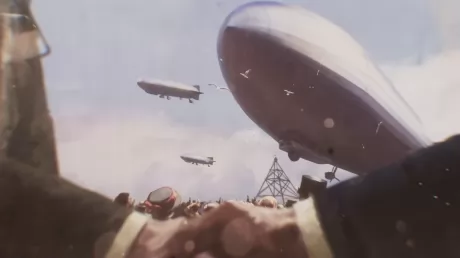
Nothing prevents you from forcing your hand and using the army to try to take control of other nations, but also under the war Victoria 3 correctly drops the player into a flurry of conflicting ideologies. Not all Pops will want war, or in the event of a revolution, part of the army may not be on our side. A realistic and compelling system in its complexity, which in any case shows some criticalities, in particular in the lack of autonomy in the command of the troops. We are not referring to the absence of moving units on the map, replaced by animated models of trenches and artillery and indeed in our opinion the dynamic movement of the front reflects with sufficient clarity the progress of wars. Instead, what made us turn up our noses is the perception of partial control over the strategies adopted by our generals. We cannot deny the consistency of the game in this: we are a head of state and it is normal that we rely on the decisions of the men placed in command of the armed forces. We will only be able to tell the generals whether to defend or attempt to break through the front to which we will assign them, and it will be only the set of contextual characteristics of the battle that will determine the outcome: the traits of the commander, his experience, the type of terrain, the number of troops and their equipment, would in theory be crucial elements to obtain a triumph.
Unfortunately, however, all too often we have successfully defended the fronts that actually saw us at a marked disadvantage, without being able to understand precisely how. Alongside this somewhat sparse war component we find, fortunately, a renewed and expanded diplomatic system. A big news in Victoria 3 is the Diplomatic Play, a new way to interact with foreign nations that will allow us to exercise muscles and friendships in an exchange of polite intimidation.
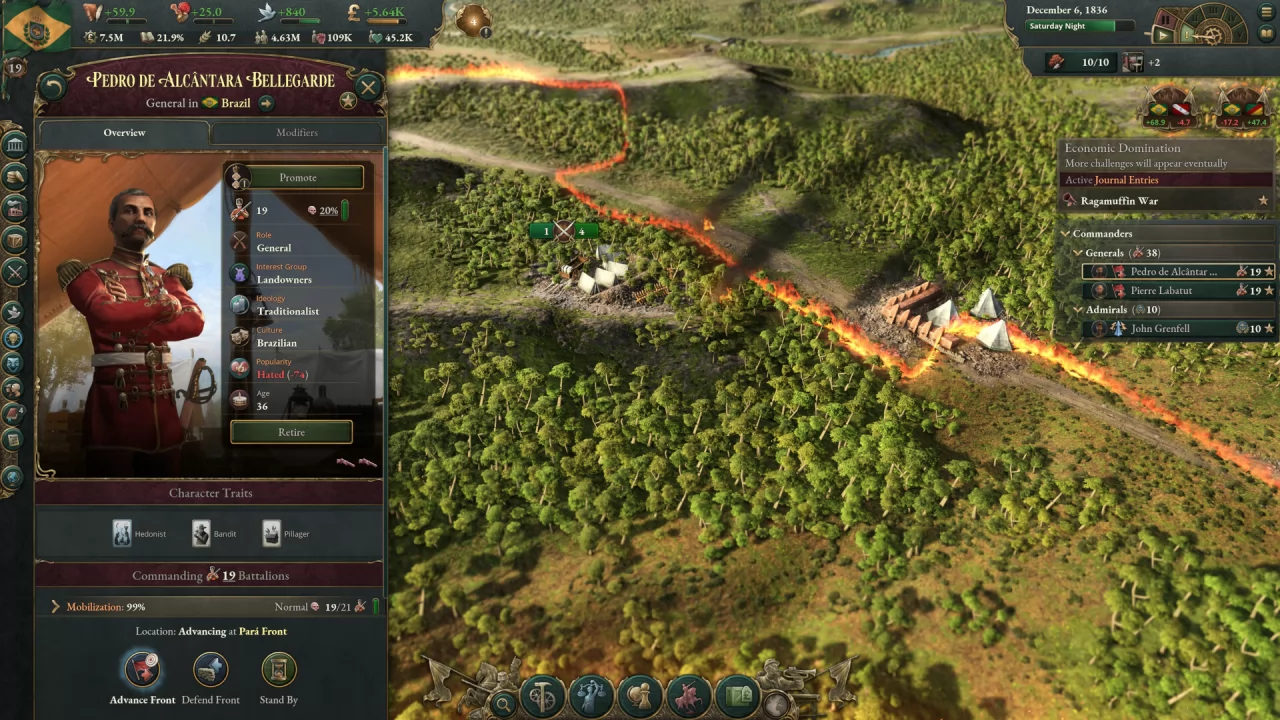
Developers have basically extended aims and modalities of the mechanics of the casus belli for diplomatic purposesFor example, we will be able to ask for territorial concessions to a less developed state by threatening to wage war in case of refusal, and it will be at this moment that a battle of wills will be unleashed between the two nations. The demands are visible to both sides, with the possibility for allies and neighboring states to get involved. Whoever is the protagonist of the story can do anything from simple financial support to sending troops to make sure their demands are met.
In short, this system gives dynamism to a tactical substrate otherwise very similar to the previous second chapter. If in the preview we had some doubts about the reactivity of artificial intelligence, in the version we tested near the exit any uncertainty disappeared. The other nations, in fact, seem to respond sensibly to the threats of a war they know they cannot win, seeking allies or yielding to the player’s requests.
Only in extreme cases did we find ourselves faced with the stubborn resistance of non-industrialized countries which, despite their extreme numerical and technological inferiority, have decided to give their all by fighting a lost war from the start. A choice that we did not feel we could blame, identifying ourselves with the prospect of being completely subdued by a foreign power.
A picturesque panorama
In terms of graphics, Victoria 3 is undoubtedly the game with the best visual impact of the Paradox house, even better than the recent Crusader Kings 3. What in fact is a mechanic just mentioned in other series, in this title has a name of its own: living map.
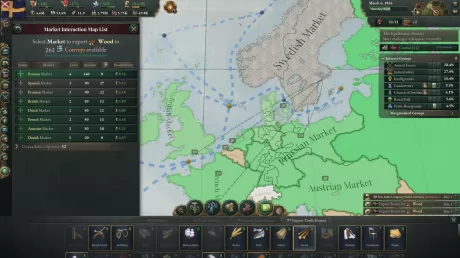
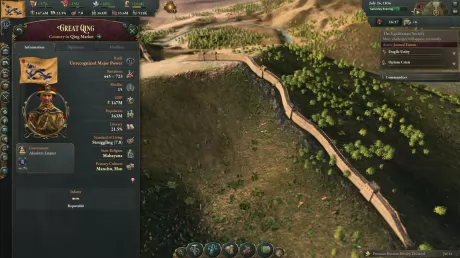
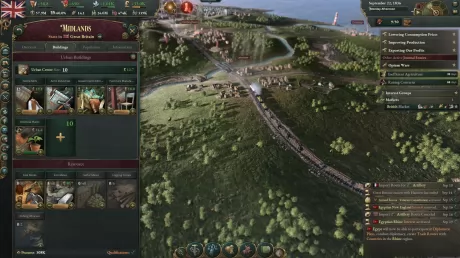
Every minimal evolution of our cities and our nation is reflected on the game map through dynamic models. We will see new cities and factories springing up, as well as changes in the rail infrastructure that outlines our states or planes and airships that ply our skies. The most interesting aspect of this feature is that it is not arbitrary additions to symbolize a generic change, but it will actually be the new buildings built that will appear. A minutia perhaps, which will go unnoticed by most, but which helps to strengthen the link between the player and the state of the nation with splendid miniatures. The picturesque views shown to us are marvelous in their ability to combine aesthetics and functionality. In short, the visual presentation of the game is a real feast for the eyes: through the new lens system, we will have shortcuts for much of the information that will be instantly reflected on the game map, because it will allow us to call up the appropriate display mode for trade, industry, the military, politics and more still. Not that all this does not come at the cost of some performance loss, unfortunately. Especially in the more advanced stages of the game, we have seen unpleasant framerate oscillations, which could have a greater impact on the enjoyment of the experience on older hardware.

Victoria 3 PC Analyzed Version
Victoria 3 finally arrives after years of incessant requests from the Paradox community and grand strategies, and it does it in style. The team responsible for the new chapter has managed to implement what fans were hoping for: expand, innovate and simplify a system of social and economic simulation without sacrificing the complexity that had so amazed already in the second title of the series. Victoria 3 is not a game for everyone but all those who want to play it hard will see this “investment” highly rewarded.


